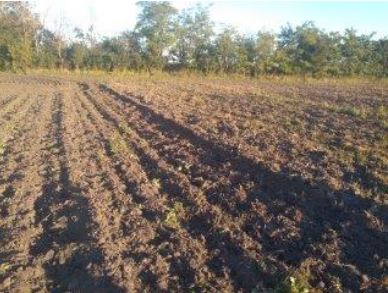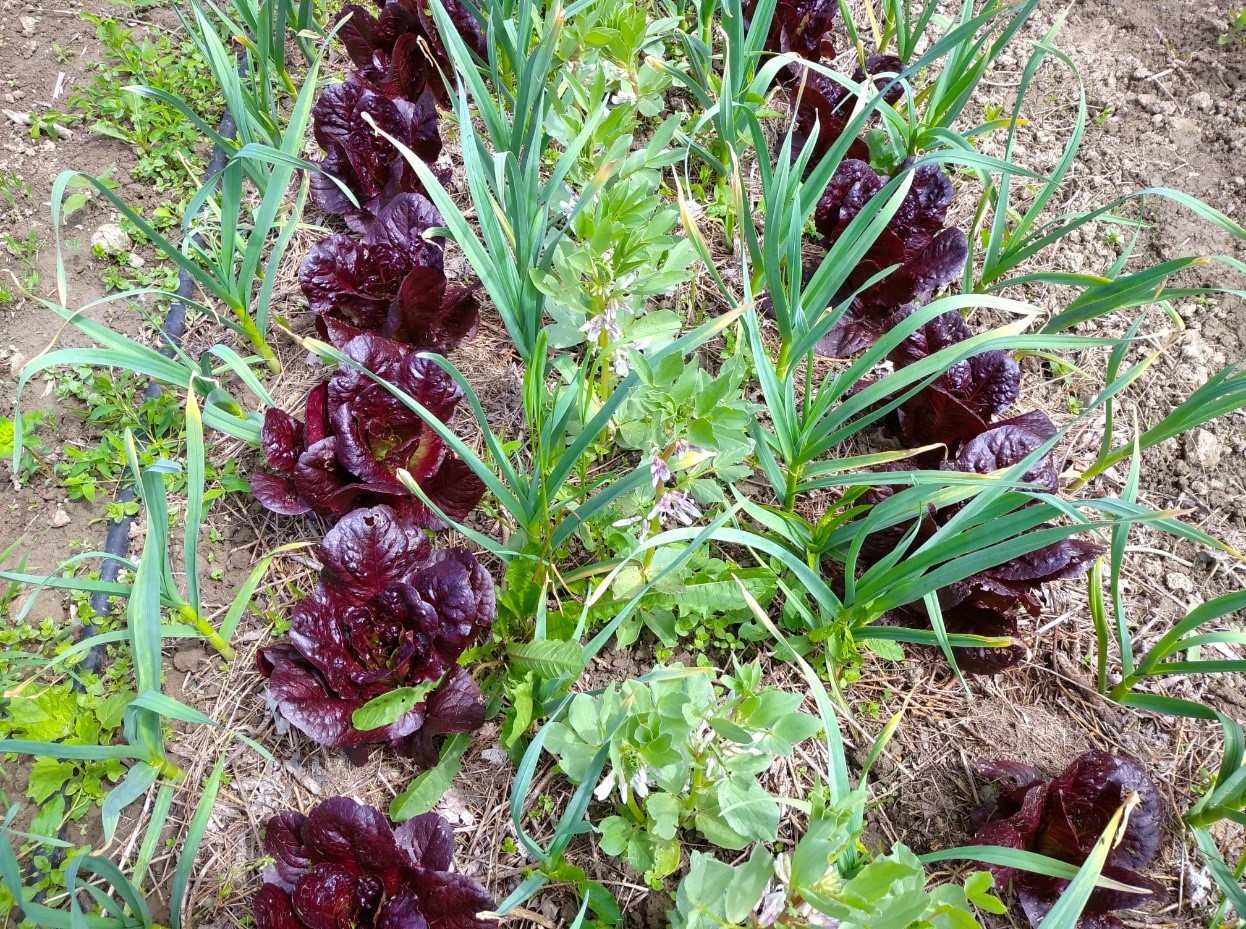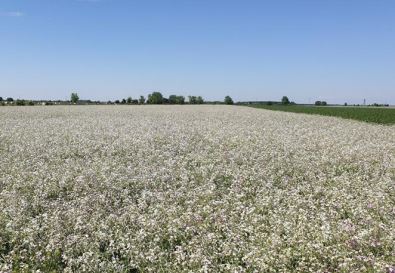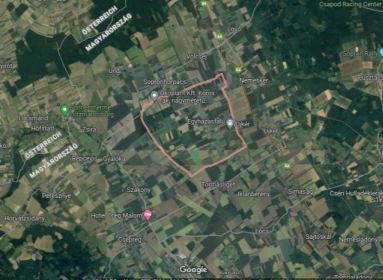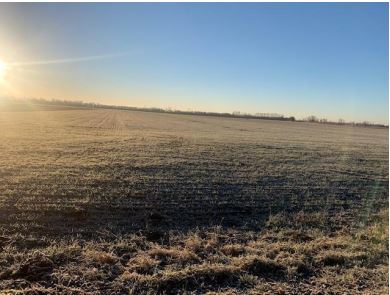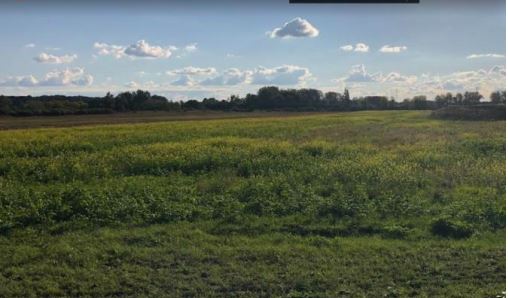Categories
Hungary
Farkasdiné Fekete Vilma
Success Story
The personality and farm of Farkasdiné Fekete Vilma significantly contributes to the development of the agricultural sector in Hungary. The farm, located in the village of Mezőörs, plays a prominent role in Győr-Moson-Sopron County. Farkasdiné Fekete Vilma is an extremely dedicated and responsible farmer.
The farm boasts a large land area, spanning 140 hectares. It is operated as a family farm, with her husband and sons, all of whom are agricultural engineers, and they do not employ seasonal labor. Vilma understands that farming is not an easy task and that proper manpower is essential for maintaining a successful farm. It seems that through effective labor organization and efficient resource utilization, she manages her farm successfully.
Over the past 5 years, the farm's activities have focused on arable crop cultivation and livestock breeding. During this period, they have grown several types of crops, including wheat, rapeseed, barley, sunflowers, corn, phacelia, and they also have 43 hectares of pasture. In terms of livestock, they raise and breed pigs and sheep. In addition, to add diversity, there is a small orchard on the farm. This diversity demonstrates that Vilma and her family understand the advantages of economic diversification in agriculture, which leads to a more secure and stable farming operation.
During the interview, Vilma revealed that her farm practices regenerative agriculture (RA) techniques. Regenerative agriculture is an approach aimed at restoring soil and the environment while promoting sustainable farming practices. It is crucial for farmers to recognize the benefits of RA, as it can have a significant long-term impact on agricultural production and the environment. Vilma and her family have been applying these practices for years, across the entire farm. RA practices include the use of organic manure, beneficial soil bacteria, cover cropping, crop rotation, and the planting of hedgerows. These measures not only increase the farm's efficiency but also contribute to soil quality improvement, prevention of soil depletion, and successful crop cultivation.
In order to implement RA practices, Vilma and her family not only learned from their parents but also gathered knowledge from various sources. While they didn't participate in specific RA training, they continuously educate themselves on issues affecting their farm, read agricultural literature, and consider the opinions of experts. One of her sons even obtained a Precision Agriculture engineering degree. This shows that the farmers are open to absorbing new information and constantly strive to improve their farm.
Thanks to RA practices, farmers also contribute to environmental protection and sustainable farming, which can have long-term benefits for both their farm and the environment. However, it's important to note that agriculture is always fraught with challenges, and the introduction of regenerative agriculture is not always easy. To overcome potential obstacles, they likely cooperated closely, relied on each other's support and experience.
Due to RA practices, environmentally friendly and sustainable farming, they contribute to nature conservation and biodiversity preservation. Furthermore, the restoration and preservation of soil fertility can lead to sustainable agricultural production in the long run, which is critical for the future success of the farm.
Vilma and her family seem satisfied with RA practices and intend to continue implementing them in the future. Their commitment to environmentally conscious farming and the positive results achieved on their farm reinforce their belief that they made the right decisions when they embraced regenerative agriculture. However, they note that they do not plan to change their existing RA practices or the range of crops they cultivate.
The case study of Vilma Farkasdiné Fekete is an excellent example of how sustainability and ecological approaches can bring significant benefits to the agricultural sector. The adoption of regenerative agriculture allows farmers to responsibly care for natural resources and contribute to environmental protection. Sharing and spreading such best practices can contribute to the broader development of the agricultural sector and the promotion of environmentally conscious agriculture.
In summary, the REGINA case study is an inspiring story of how agriculture can be improved and production can be made sustainable through the introduction of elements of regenerative agriculture. The collection and sharing of such good practices can contribute to the broader development of the agricultural sector and the promotion of environmental protection. The example of the REGINA farm proves that regenerative agriculture is not only a more sustainable farming method but can also be the key to the long-term success of agriculture.
LABELS: Hungary, crop production, livestock, biodiversity
Dunasziget Vegetable Producing Community
Success Story
Field size (ha): 3 ha of which 6000m2 is horticulture, 600m2 is greenhouse, the remaining area is meadow and pasture. The farm grows 50 species of vegetables and 25 to 30 species of fruit. Seasonality is a high priority, as it guarantees that fresh seasonal vegetables get into the baskets of the community members.
Medicinal and aromatic herbs, a stretch of forest - oak, ash, elm gallery forest, acacia, willow, poplar, hornbeam, cover crops and multifunctional field margins.
The 8-course rotation is used for vegetable production. The practices applied in crop protection are: crop combinations, resistant species, sulphur fungicides, row covers (net or veil) against potato beetles. Products containing humic acid (authorised in organic farming). Post-harvest mulching is used to promote the decay of crop residues. Shallow cultivation is used, with minimum soil disturbance. The greenhouse is not heated and cold-tolerant leafy vegetables are grown there over winter time, primarily in small greenhouse polytunnels. Seedlings are also grown mainly in the greenhouse. No ploughing has been practised for many years, and shallow cultivation is done with cultivator. In addition, surface composting (cold composting) and small amounts of available manure are the basis for nutrient replenishment.
LABELS: Hungary, vegetables/fruits, biodiversity
Bezenye Agricultural Cooperative
Success Story
The agricultural company cultivates an area of 393.3 ha. The crops grown on their land are: winter wheat, grass (8 ha), alfalfa, winter barley, buckwheat (as a secondary crop), phacelia - also used as multifunctional field margins.
They carry out organic farming and the crops are cultivated in an environmentally friendly way using minimum tillage. Soil moisture loss is reduced by mulching, and green manure is applied to maintain and promote beneficial biological activities in the soil. In addition, it cultivates secondary crops (e.g. buckwheat) and maintains 8 ha of grassland. The backbone of nutrient replenishment is the use of foliar fertilisation and biostimulants.
Applying the practices of RA is considered to be the most beneficial from the point of view of environmental protection, and this type of farming is also an advantage in meeting consumers’ expectations for a more environmentally conscious approach. The difficulty they need to face is that there has been a reduction in yields, which slows down the returns, and that the more severe controls by the organic certification impose a greater administrative burden on the producer.
LABELS: Hungary, crop-production, organic
Derdák Gábor, Young Farmer, Egyházasfalu
Success Story
The young farmer, who operates his farm on 60 ha, lives in Egyházasfalu, on the western edge of the Kisalföld. In 2015, they started the generational change, so Gábor continuously takes over the family farm from his father, who cultivated the fields with the care of a good farmer based on observations and customs. These are practically the same as the basic principles of the management practices referred to today as RA. Agriculture was passed down from generation to generation, which Gábor supplemented with higher education. From the beginning, he used the different RA practices throughout the area. As the vice-president responsible for rural development of the Győr-Moson-Sopron County National Chamber of Agriculture, as well as the president of the Young Farmers' Farmers' Circle of the Hungarian Farmers' Association and Farmers' Cooperatives of the county, he provides assistance to agricultural stakeholders in the region and unites young farmers. In 2020, he also won the Young Farmer of the Year title. He plays a prominent role in community life, and in 2022 he was also elected national president of the NAK (National Chamber of Agricultural Economy) Small Producer Cooperation and Local Initiatives Department.
The main activity of the farm is the cultivation of arable crops (wheat, barley, rapeseed, corn, poppy, soy, sorghum) and pig breeding. As an agricultural engineer, he considers it important that animal husbandry and crop production are in harmony on his farm. In this way, you can improve the condition of the soil with organic fertilizer at appropriate intervals. He tries to avoid compaction or dusting of the soil with minimal work. If justified, green manure plants are also used to cover and improve the soil. By using soy in the crop rotation, atmospheric nitrogen can also be bound, thereby reducing the use of artificial fertilizers. He was also trained as a precision engineer, with the aim to acquire the knowledge of planning the most reasonable and site-specific nutrient supply.
He clearly sees the advantages of RA in the fact that organically fertilized areas can be cultivated much more easily after a while, thereby reducing the fuel consumption of power machines, which is a great economic advantage in today's energy prices. Fewer input materials are used, e.g. from fertilizers. They do not need to use different bacterial preparations to break down the stem residues, since they have a living medium in their soil. Thanks to balanced plant nutrition and extensive crop rotation, their plants are healthier, which means they use significantly less chemicals.
He overcomes the obstacles that arise - for example, that soil improvement takes longer - with a lot of patience. "This form of cultivation requires a lot of patience before we get tangible results. For example, while we see the effect of artificial fertilization within a few weeks or months, with organic fertilization we only achieve visible results in several years," he says.
He is satisfied with the RA and would like to continue this form of management with further improvements. With even more precise machines, they could further reduce work operations and thereby protect the environment better.
LABELS: Hungary, crop-production
Bóna Szabolcs, Rábapordány Agricultural Zrt.
Success Story
Founded in 2000, Rábapordányi Agricultural Zrt., located in the heart of Rábaköz, covers an area of 1,100 ha. The main profile of the economy is livestock breeding. Bóna Szabolcs farmer started introducing regenerative agriculture practices in part of their territory in 2012, which he learned by watching American video materials. The farm has 82 permanent employees and 3 seasonal workers. The farmer was elected as the Animal Breeder of the Year in 2022.
The main activity of the farm is animal breeding (dairy cattle breeding, pig breeding, pig fattening), their crop production is intended to provide the supply of bulk and fodder for livestock through the production of various arable crops: winter fodder peas, soybeans, wheat, spring barley, silage corn, rye, alfalfa.
On the one hand, they started using regenerative practices in their farm to protect the soil, as it was clear from their soil test results that the humus content of the soil decreased even with organic fertilization. They wanted to reverse this process, and they succeeded! On the other hand, due to the significant increase in cultivation costs. They were looking for ways to reduce costs without a significant decrease in yield.
After legumes in the crop rotation, they try to reduce tillage to zero. Basically, they try to use as little soil disturbance as possible after each plant. They try to provide soil cover for as long as possible, either with mulch or by using cover crops. Cover crops are sown after the summer crops, in front of their spring-sown crops. They are also experimenting with cover crops in front of autumn cornfields of an experimental nature. Termination is carried out in early spring. Rye is sown in the fall, combined with beech, which is harvested as hay, then the area is organically fertilized, which is worked shallowly into the soil and sown with corn. In the year 2022, direct seeding after rye was also tried on an experimental basis, encouraged by the results, in 2023 the entire second sowing was carried out without cultivation, with a direct seeding machine.
Depending on the results, they would like to continue the practices of regenerative agriculture, as Rábapordányi Agricultural Zrt. tries to farm in an environmentally conscious way. It strives to reduce its energy consumption. During its operation, it complies with the legal framework for energy efficiency, which has recently increased in value both from the point of view of environmental protection as well as economics.
An important aspect of their farming is carbon sequestration (increasing the humus content), as they see the only real carbon sequestration activity in crop cultivation with correctly performed tillage.
LABELS: Hungary, livestock, crop-production
Schmidt Péter, Young Farmer, Rábapatona
Success Story
The young farmer, who operates his farm on 90 ha, lives in Rábapatona in the Kisalföld. He learned the farming practices related to RA from the articles available on the Internet. He uses RA practices since 2015 in some of his areas, especially in field crop production (wild wheat, aspen barley, phacelia, sunflower, cabbage rape, corn, purple clover). The farm has 2 permanent and 10 seasonal employees. The latter are employed in the horticultural sector.
The main activity of the farm is growing field crops (wheat, barley, phacelia, sunflower, cabbage rape, corn, purple clover) and other vegetables and fruits: strawberries, cherries, pumpkins, sweet corn, sweet potatoes. In his economy, there are many crops and green manure crops, he likes to grow nitrogen-fixing plants (purple clover), he uses cover crops to preserve soil moisture, he turns the stem residues back into the soil to increase its organic matter content and improve its water retention capacity, and he also uses no-rotation tillage. These are all RA practices.
He started using these methods in order to increase the soil's organic matter content and water retention capacity. By turning the stem residues back and turning the green manure plants (cover plants) into the soil, the organic matter content in the soil increases. This is useful in several ways. It helps bind and retain water in the soil and increases microbial activity. Water and microbial activity are the keys to nutrient discovery processes, so plants will have access to the soil's macro- and microelement content. Tillage without rotation allows this microbial activity to be permanent in the soil.
As a result of RA, crop yields improve, soils cultivated in this way have better water balance, are easier to cultivate, and therefore use less fuel. Cost-effectiveness is not only good for the farmer, but also for the environment.
Among the obstacles and difficulties, he underlines the controversy that in some cases the use of cover crops leads to an increase in insect pests, primarily in rapeseed, which must be dealt with more intensive plant protection activities, but this is contrary to RA practices.
Overall, he is satisfied with the RA and will continue it in the future, as he sees its effect as favorable, but - as he mentions - these are long-term processes.
LABELS: Hungary, crop-production


